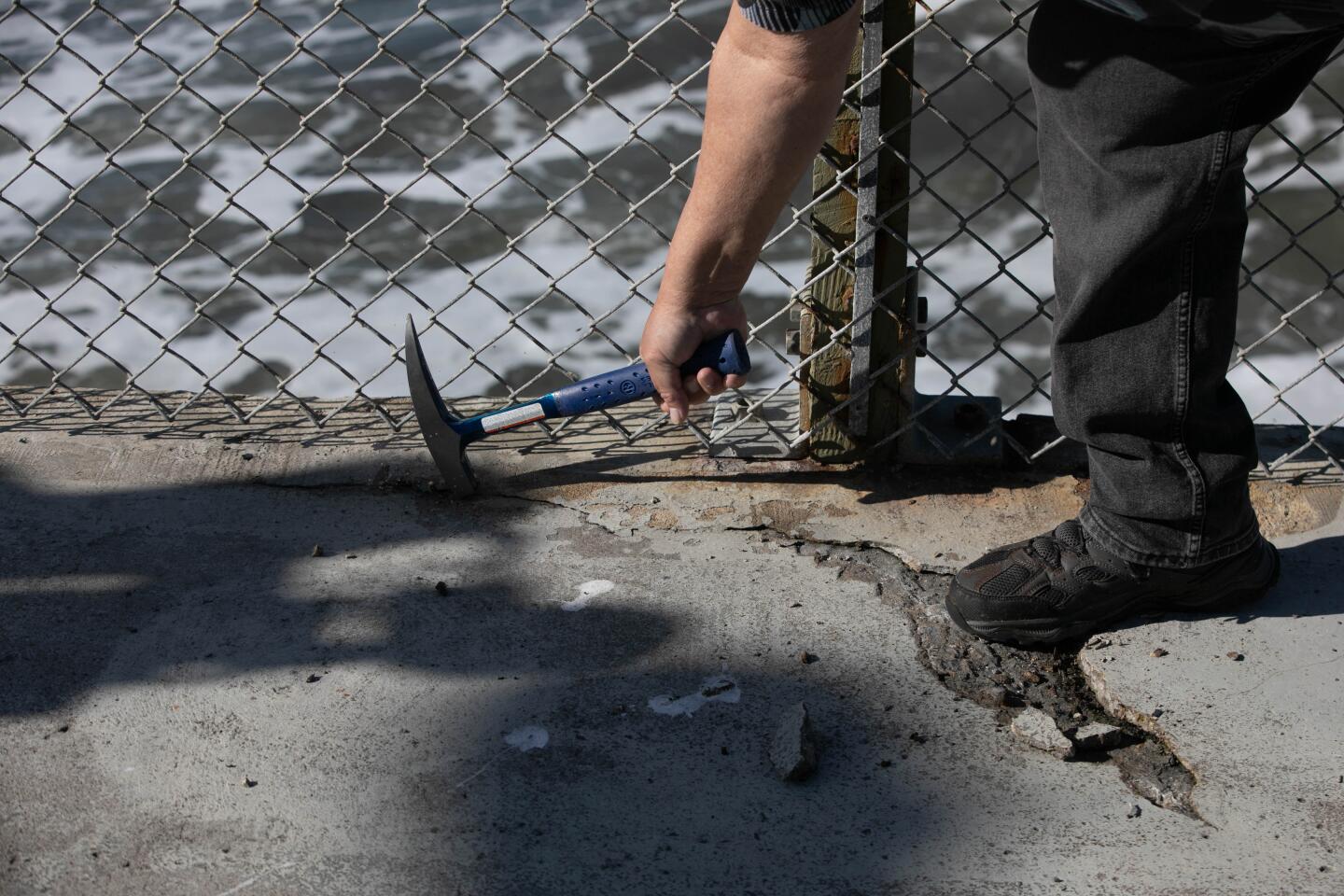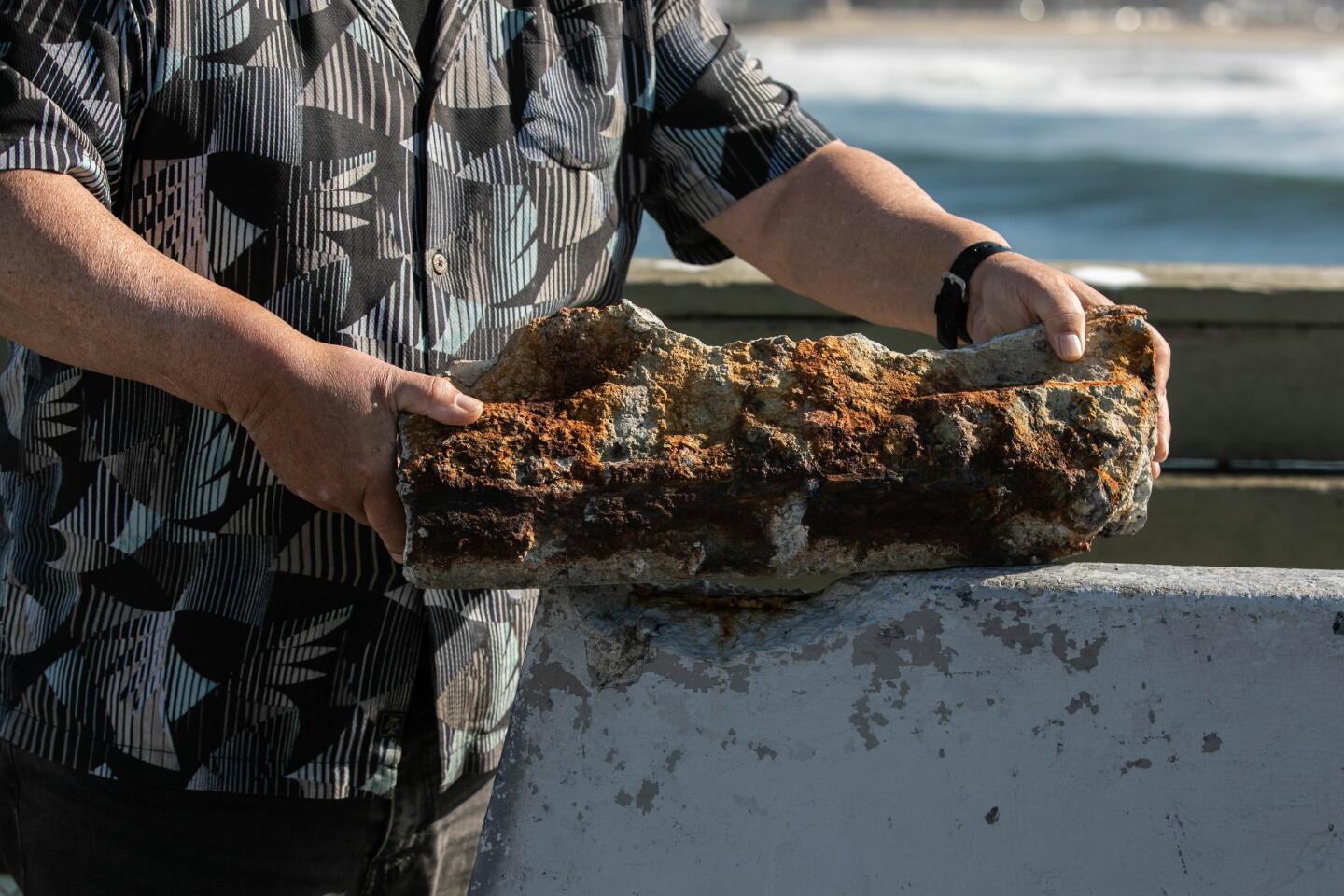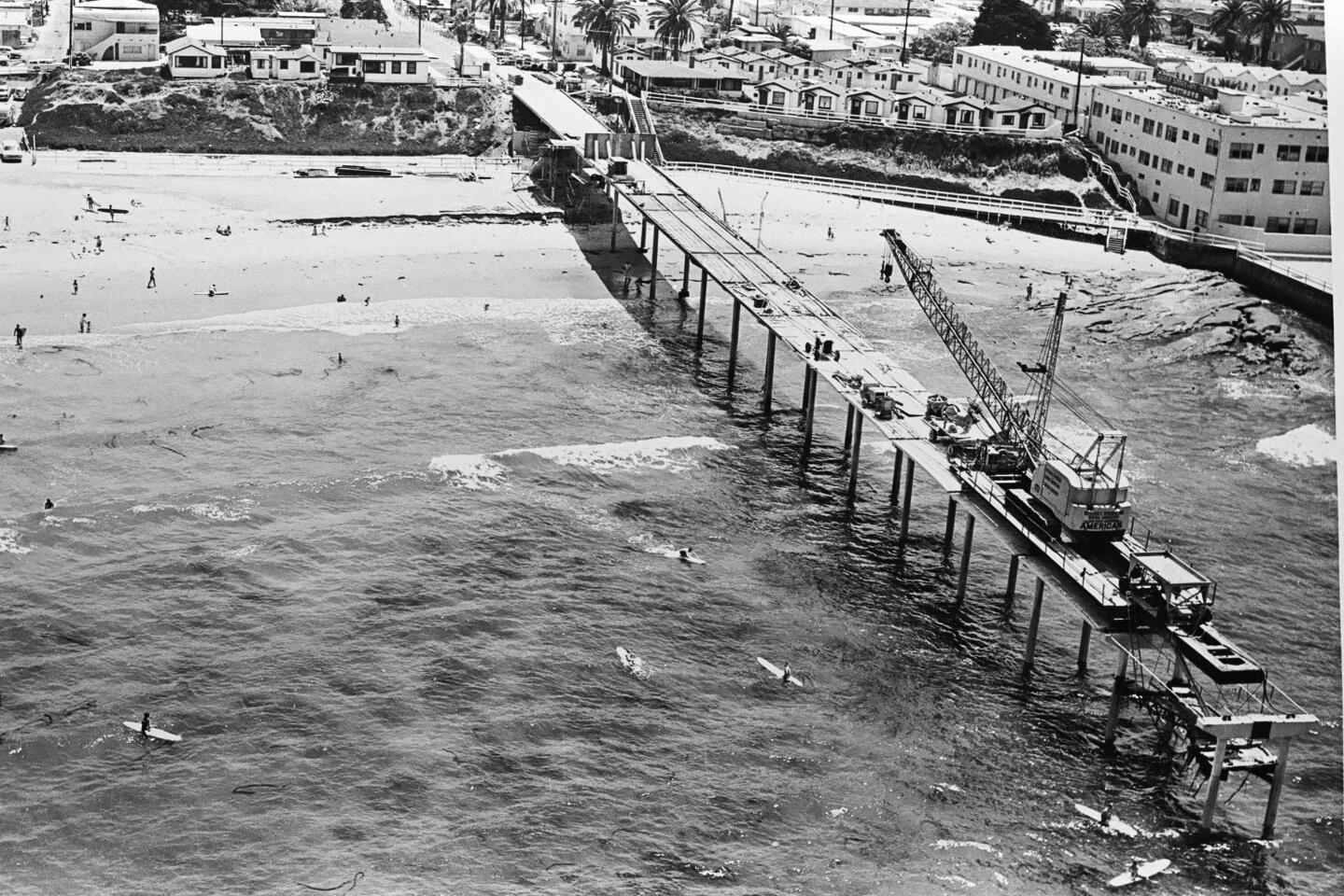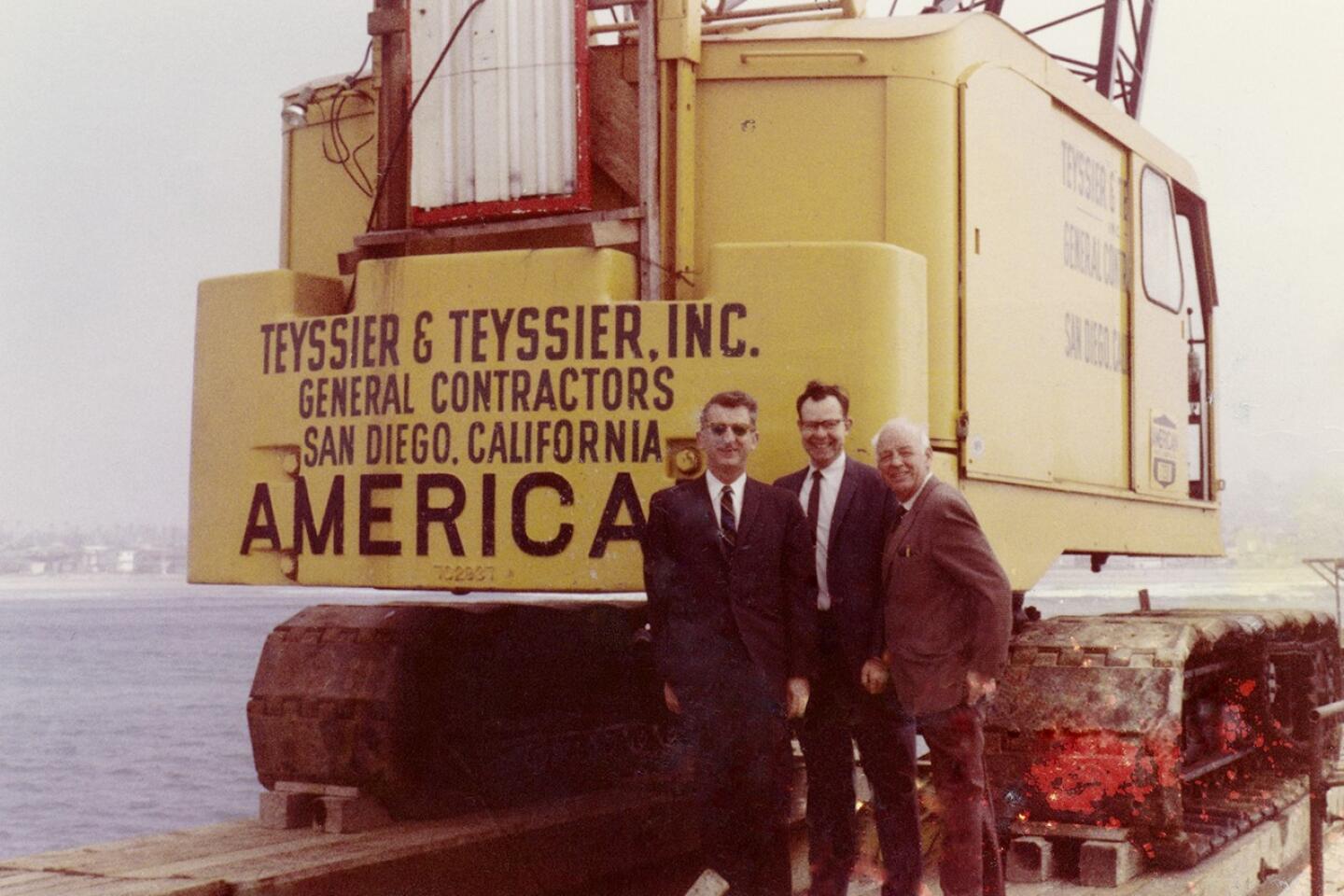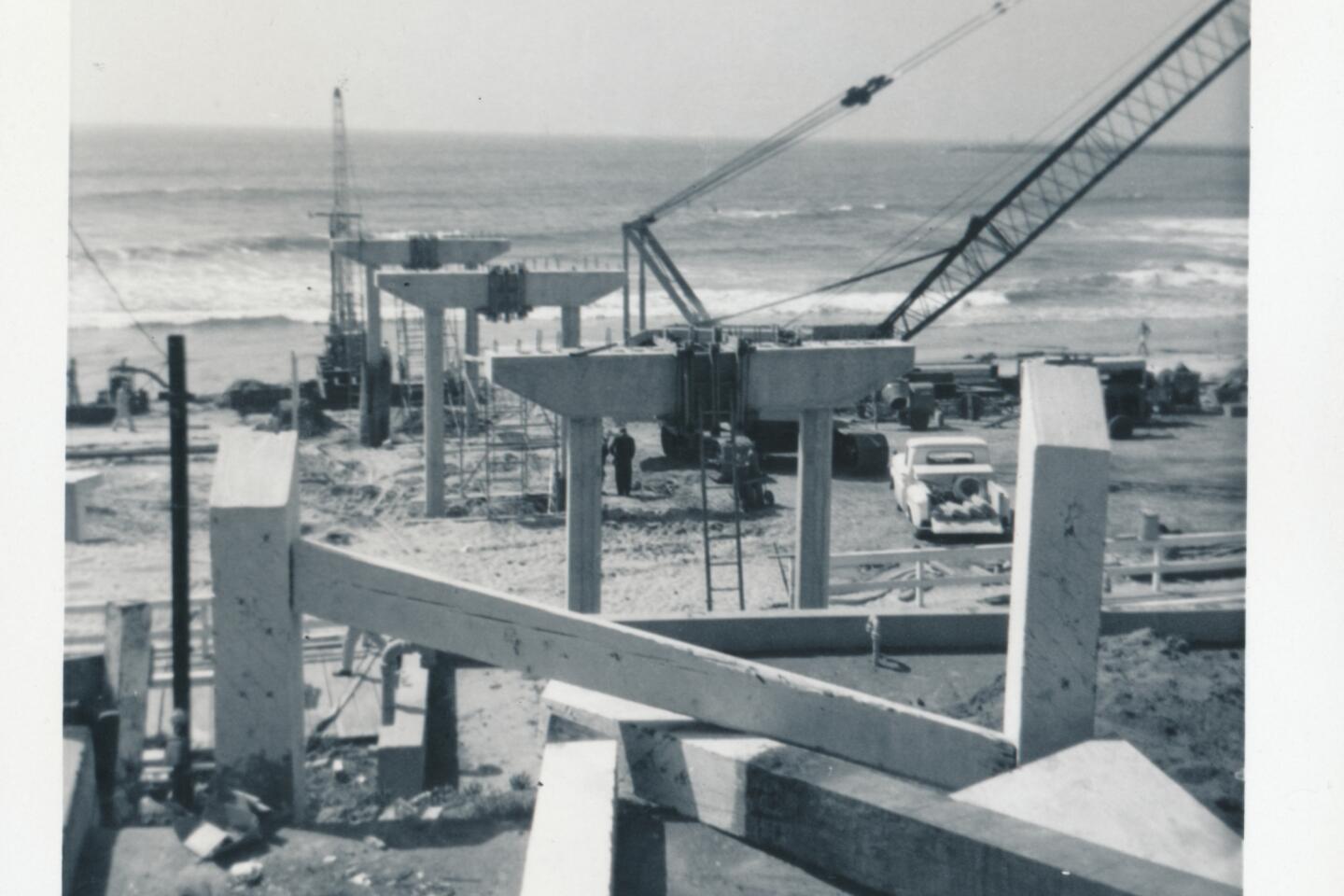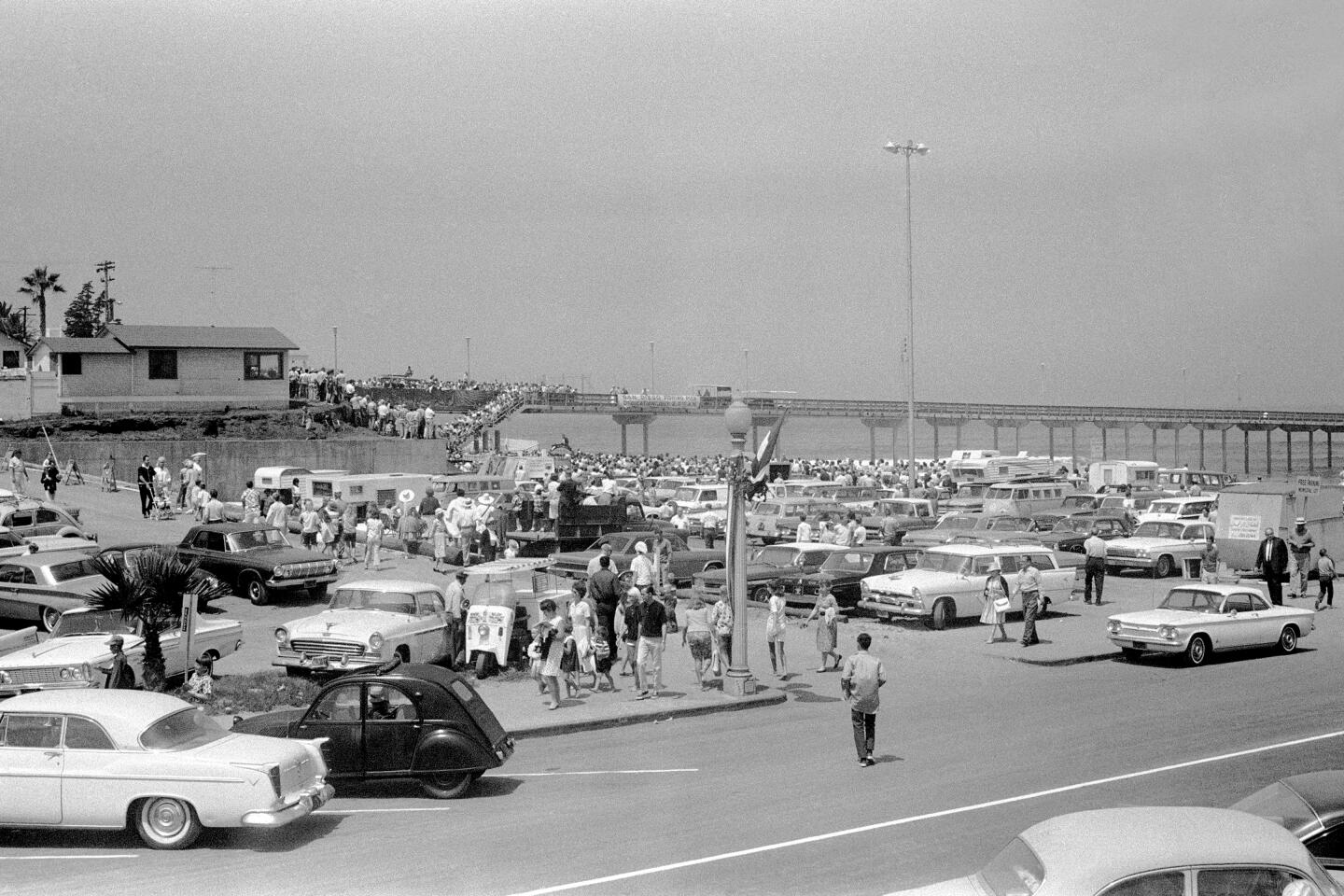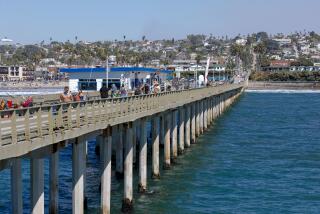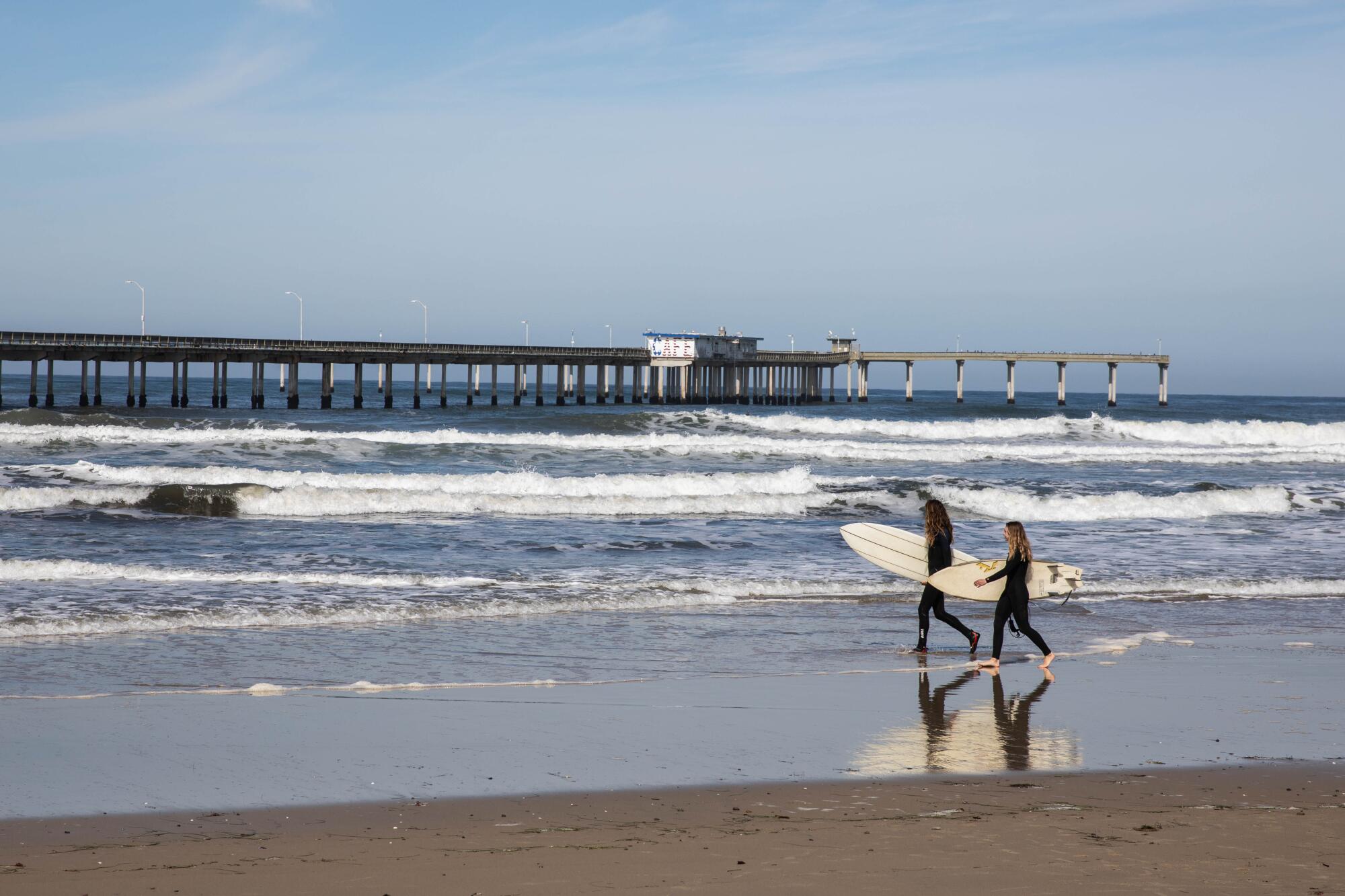
The city of San Diego wants public input on the future of the 56-year-old Ocean Beach Pier: Repair it, rehabilitate it or replace it?
For half a century, the Ocean Beach Pier has been a pillar of its San Diego community — for the fishers who have cast their lines over its rails, the junior lifeguards who’ve leaped from its platform, the locals who’ve watched Fourth of July fireworks launch off its decks, even the dolphins and pinnipeds who’ve swum through its base.
“It is not just a structure, but it’s a beloved icon of San Diego and of Ocean Beach,” said Mayor Todd Gloria.
But no structure — not even an iconic one — lasts forever.
This story is for subscribers
We offer subscribers exclusive access to our best journalism.
Thank you for your support.
As constant exposure to saltwater and the harsh marine environment has caused the pier’s concrete deck to crumble in places and rust to climb its piles, the landmark’s age has started to show.
A 2018 study determined the pier had “reached the end of its service life” and gave the city three options: repair it, rehabilitate it or replace it.
In the years since, winter storms have resulted in several months-long closures. High surf battered its railing boards, cracked piles and even moved hundred-pound concrete benches across the decks.
The pier’s gates have been shut since January, when one of the largest ocean swells to hit San Diego County in years resulted in 10- to 12-foot waves along the coast.
These types of storms have been growing in magnitude in recent years, prompting more frequent pier closures and a growing wave of urgency to find long-term solutions to ensure the pier’s viability.
Now, the city is asking the public for help in envisioning what the landmark’s future might hold.
“It’s now this generation’s turn to sit down and re-explore what this community space can be,” said James Nagelvoort, director of the city’s strategic capital projects department. “The big question is: How do you want to use this space?”
Last week, city engineers joined consultants from Moffatt & Nichol, the firm that performed the 2018 study and the report’s subsequent updates, on the shuttered pier to take a closer look at its deterioration ahead of the first in a series of community workshops on the project. That workshop, held Saturday, allowed the public to hear more about the effort and share input.
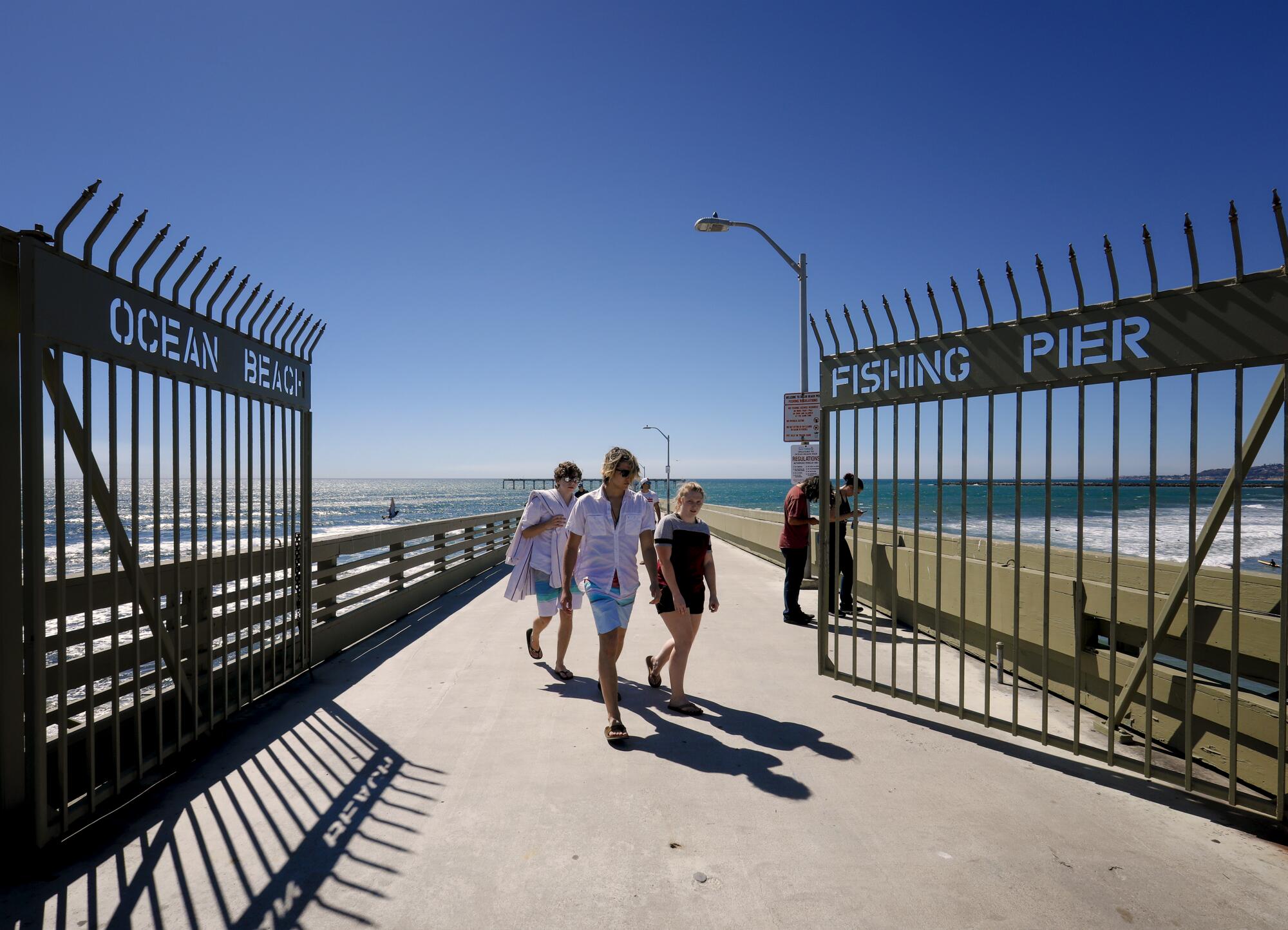
Renew, rehabilitate or replace?
After two decades in service, heavy weather first significantly damaged the pier in the late 1980s, leading to the pier’s first major structural rehabilitation in 1991.
While the pier has withstood hundreds of winter storms since then, Nagelvoort says the storms’ increasing severity in the last few years has accelerated the project’s timeline, as waves that once merely crested over the pier are now damaging it.
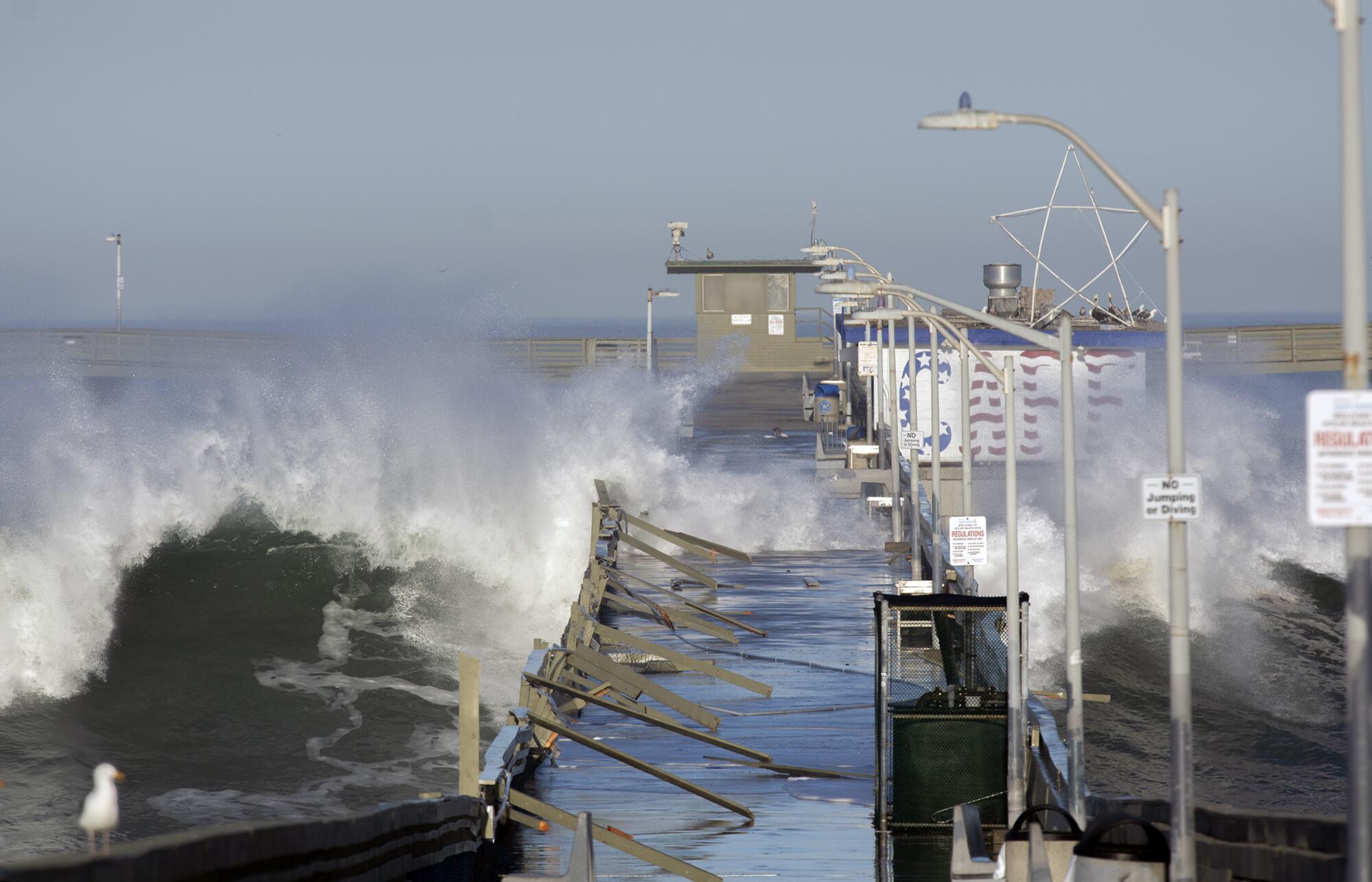
Even before then, the 364-page draft evaluation report released in December 2018 showed that the pier’s structure had already seriously deteriorated.
Its original rebar reinforcements — uncoated steel that was run through the concrete slabs, and standard materials when it was built in 1966 — have corroded, leaving the foundation’s piles at risk of falling apart.
On his visit to the pier last week, Matthew Martinez, a structural engineer and vice president of Moffatt & Nichol, pointed out some of that corrosion — using a chisel to chip away the top layer of concrete on the pier to reveal its rusty, eroded structure.
“With healthy concrete, you wouldn’t be able to do that,” he explained. “That’s really indicative of what’s happening underneath the pier … and the kind of damage that is really affecting not only the top of the pier, but the piling and the substructure as well.”
The weakened concrete has also resulted in a failure of the railing system where waves that crash onto the pier are able to unlodge posts. “That’s just the power of Mother Nature,” Nagelvoort said.
This has narrowed the pier in places, as contractors are forced to set the railing further in from the pier’s edge to find healthy concrete to secure it to, Martinez added.
The costs of a solution are significant. The 2018 report estimated that rehabilitation or replacement of the pier would both cost tens of millions — $30 million to $50 million or $40 million to $60 million, respectively — while repairing existing damage would be the cheapest option by far at $8 million.
But city officials say that price tag has since risen due to inflation and other economic factors.
Last year, the City Council allocated $8.4 million — part of the $259.4 million secured from the state budget for projects and programs throughout the city — to contract Moffatt & Nichol to reassess damage and update their report to begin the planning process for replacing the pier.
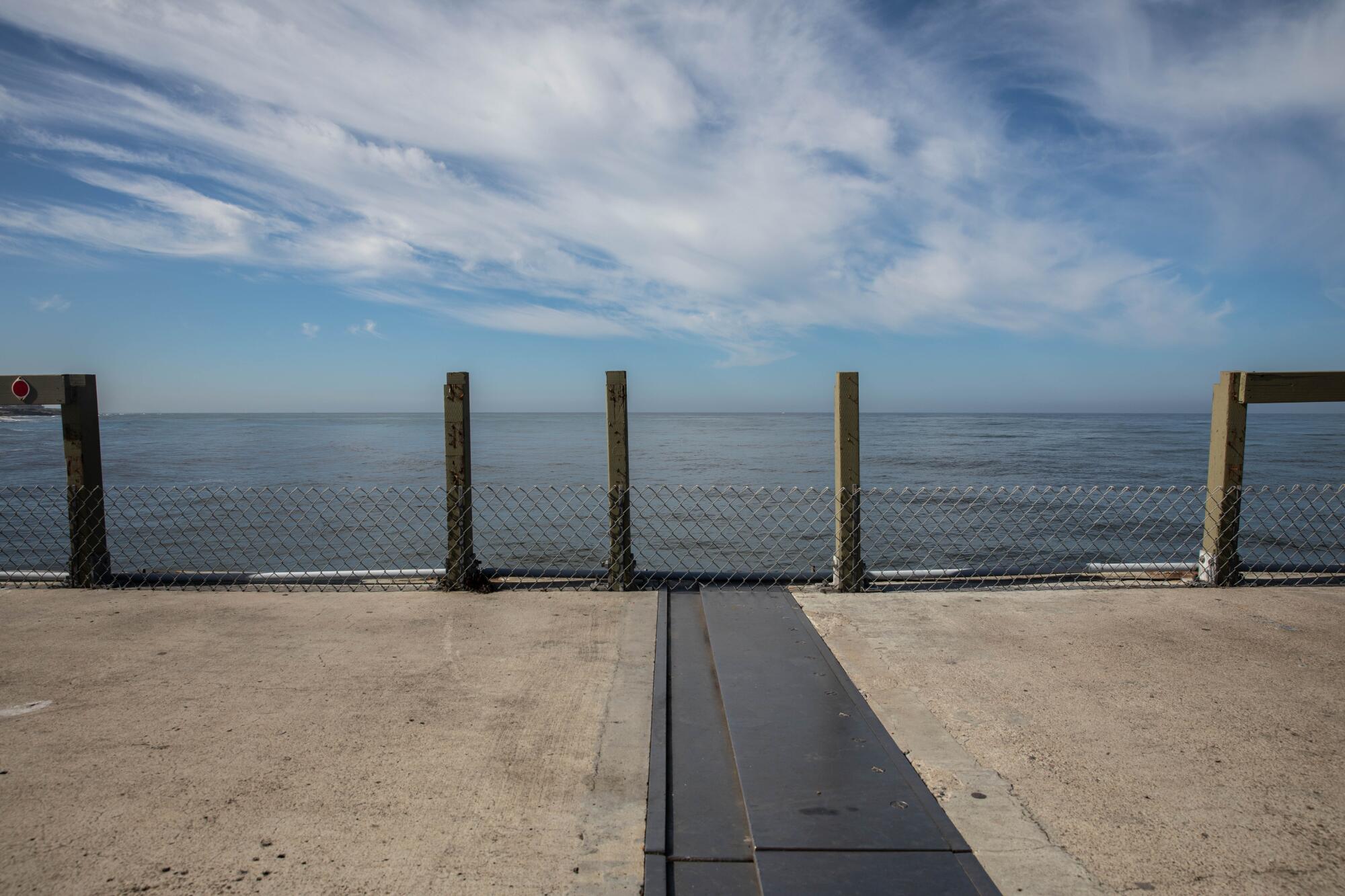
The city also created a task force — a dozen community members nominated by local advisory groups and city staff — to convey the community’s desires.
Based on the 2018 report’s findings, along with the ongoing cost of damage repair and anticipation of future sea-level rise, Nagelvoort says the city has determined replacing the pier is the best option.
City officials say the goal is for a replacement pier to have a service life of 75 to 100 years. Its cost has not yet been estimated, but a combination of federal and state grants is expected to help fund it.
Through the initial design period, expected to last roughly two years, city officials will be looking to the public to help come up with design alternatives that would most benefit the community.
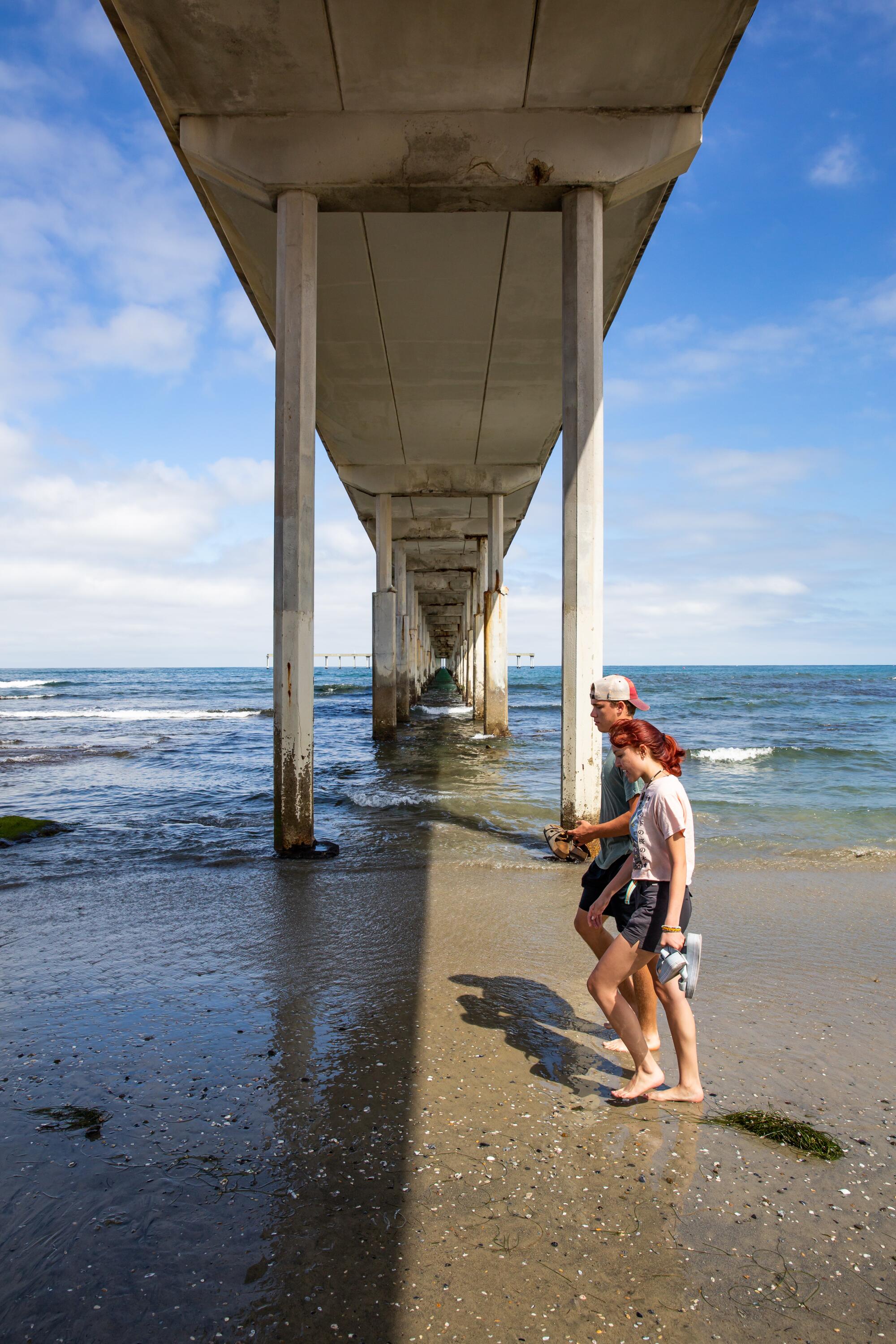
On April 1, more than 100 residents gathered in Liberty Station as they listened to engineering consultants explain the project and preliminary research at the first community workshop.
“You’re here because you care about this pier. I care about this pier,” Gloria told participants. “And I believe that with our cooperation, working together, there’s going to be a very, very bright future for the OB Pier.”
After the presentation, participants were able to speak with the project team and city leaders. They were also equipped with sticky notes and invited to visit several interactive stations that asked them to answer prompts like “What is missing from the pier experience?” and “What does the Ocean Beach Pier mean to you?”
Laid out on a table, a large overhead shot of the pier was dotted with flags as community members offered design suggestions geographically, such as adding access to public transportation or keeping the pier’s iconic gates.
The overwhelming consensus, city officials say: Replace the pier in some capacity.
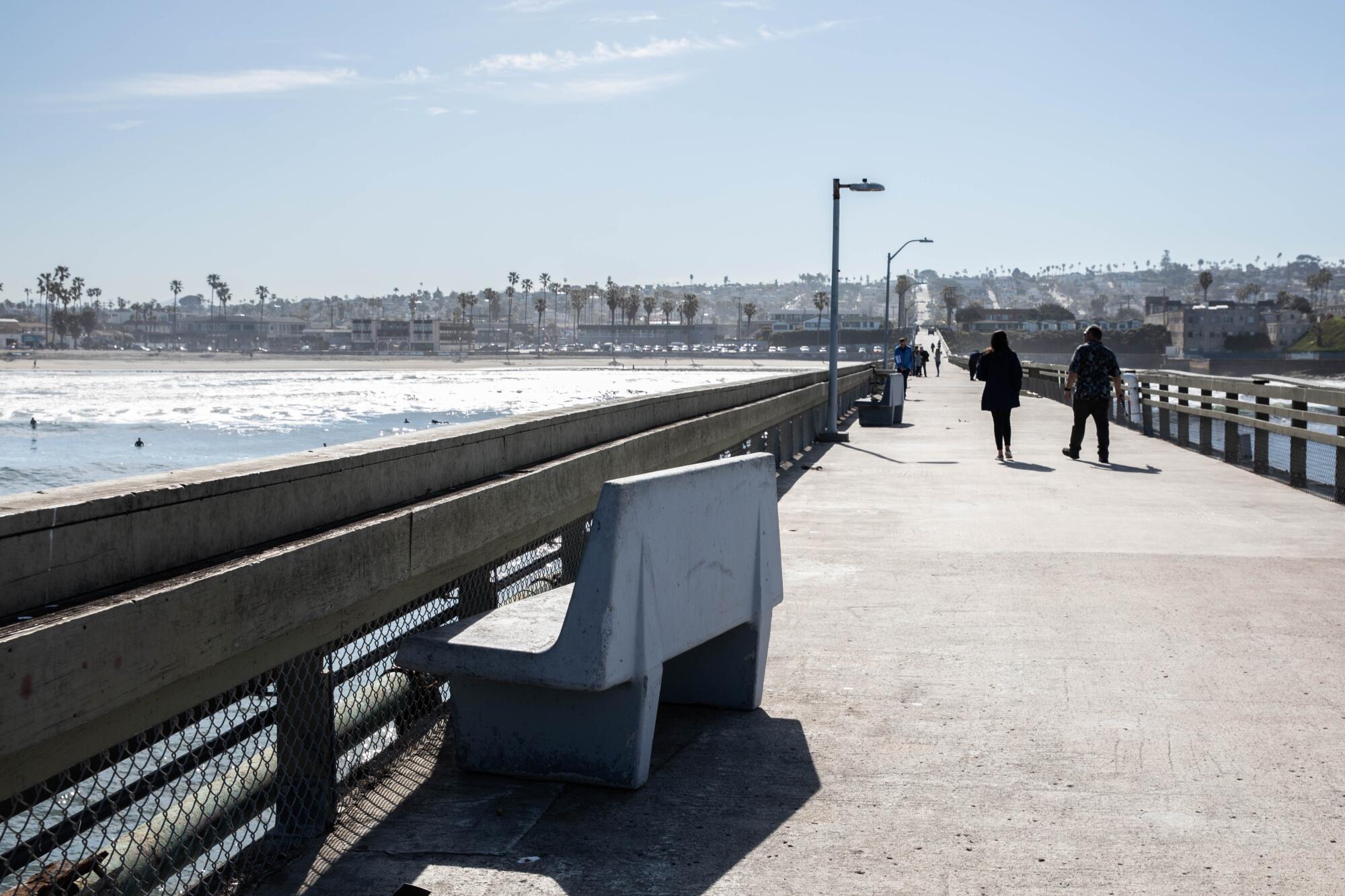
56 years of love
Located at the end of Niagara Street, Ocean Beach Pier opened on July 2, 1966, after 14 months of construction totaling less than $1 million — about $9.3 million in today’s dollars.
“We had to design our own tools,” Leonard Teyssier, the pier’s contractor, told the Union-Tribune in an interview marking the pier’s 50th anniversary in 2016. “We had to deal with rising and falling tides and constant waves.”
Nature continued to challenge engineers every step of the way through the construction of the pier, which Teyssier noted has two pilings every 30 feet, each of which is sunk 12 feet into the bedrock below the ocean floor.
Amid construction, the San Diego Union reported that “a north Pacific storm caused an unusually high sea” that knocked out three forward piles the month prior, resulting in changes to the pier’s design. This accounts for why the pier dips in the middle — where the sea pounded the pier that day — and then rises toward the end, Teyssier said.
His son Ralph Teyssier, a structural engineer who has followed in his father’s footsteps, has fond memories of the wonder of riding down the pier on the job-site Vespa and sitting in the cab of the crane out on the half-built pier when he was just 6 years old.
“It’s hard to think of OB without the OB Fishing Pier, so we need to preserve it,” Ralph added.
He hopes the pier’s renewal will in turn preserve its historic character — and honor his father’s legacy.
Today, the 1,971-foot structure remains the longest concrete pier on the West Coast and one of San Diego County’s most visited destinations, hosting more than 500,000 visitors per year, according to the Ocean Beach MainStreet Assn.
Along with the bait-and-tackle shop and cafe that float over the Pacific, the pier also draws foot traffic to nearby storefronts on Newport Avenue. But that traffic has slowed since the pier’s closure, says Denny Knox, executive director of the local business group.
“If you look at the logos that all these businesses have here in Ocean Beach, especially the brick-and-mortar businesses, almost all of them have the pier — it’s iconic,” Knox added. “We don’t want Ocean Beach to lose such a fabulous asset.”
Conceived as a fishing pier that would let lines avoid the kelp and rock beds that band the nearby shores, the pier has been a go-to destination for anglers.
With no fishing license required, nor a limit on daily catches, the pier became a vital economic resource for low-income residents from around the region, including Mexico.
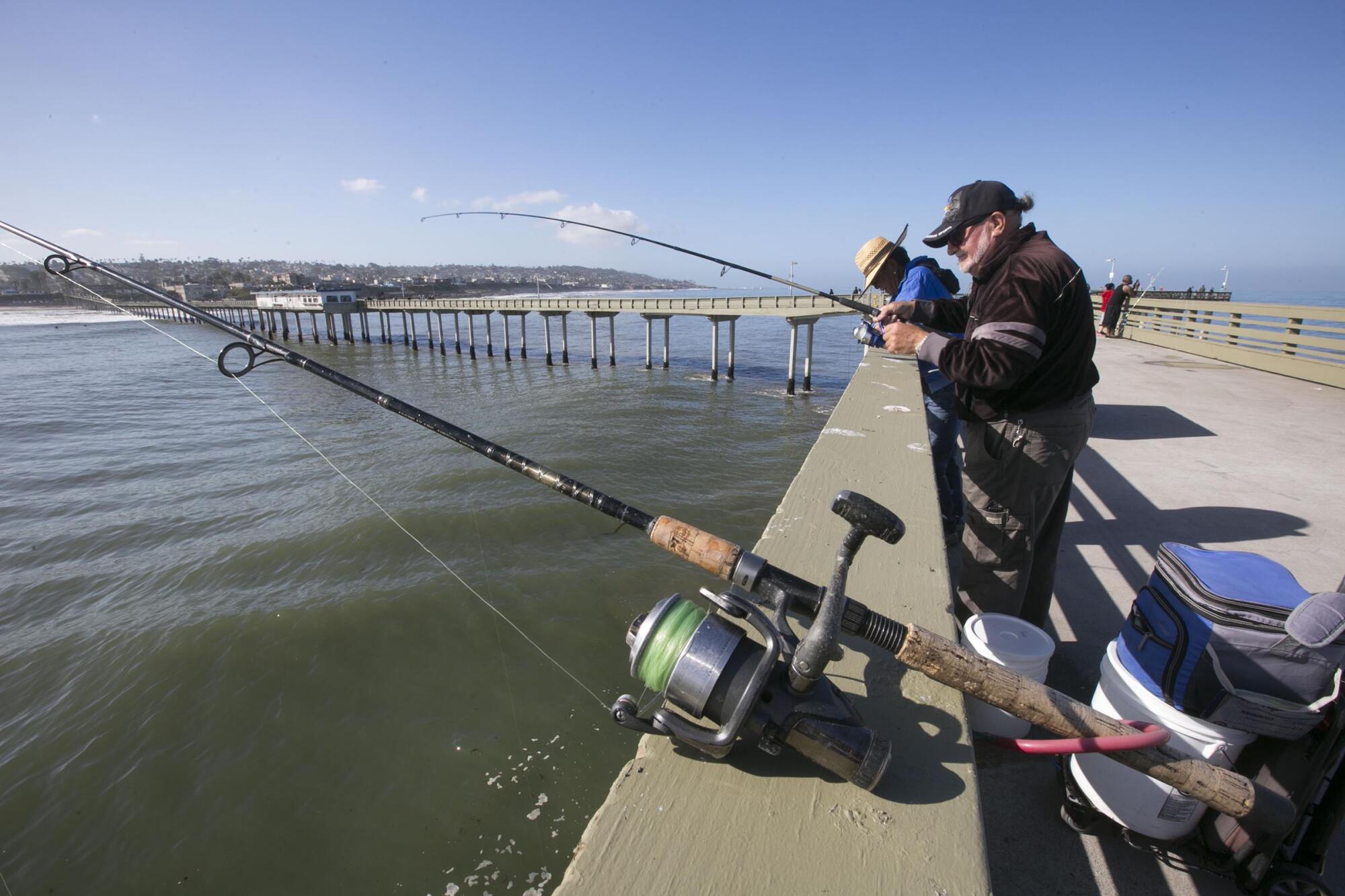
Logan Heights native John Alvarado began fishing on the pier right after it opened.
“When I was a young man, I used to go on that pier to get away from gangs, from drugs and from all the other problems … and everything else going on in the world at that time,” he said. “It was a place I could go to literally free my mind and fill my soul. ... The ocean, and access to it, saved my life.”
Alvarado and his wife founded the Good Neighbor Project in 2008 to provide education, resources and support to local youth. He teaches kids — some of whom he says had never seen the ocean — how to fish, using the activity both as a training tool for real-life skills and as a form of therapy.
And since the mid-1990s, the pier has played host to another youth tradition: Every summer, hundreds of teens in the city’s Junior Lifeguard program plunge off the Ocean Beach Pier in droves into the ocean — anywhere from 15 feet up to a daunting 40 feet below.
“It gives them a taste of what lifeguards could have to do on a rescue,” said retired lifeguard Capt. John Sandmeyer.
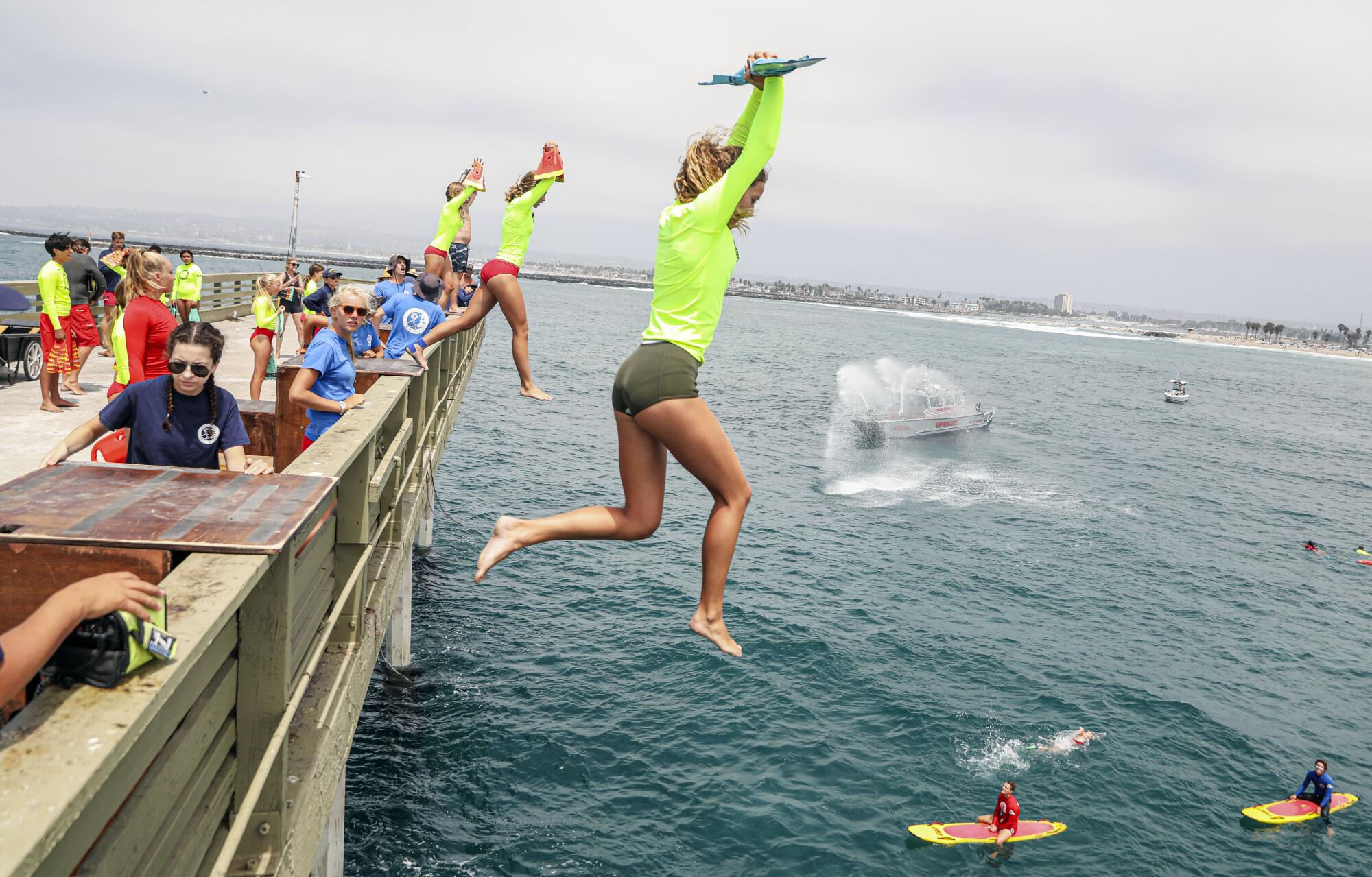
The jump not only challenges the junior lifeguards — “JGs,” as they call themselves — to face their fears but also marks the culmination of their first aid, CPR and water rescue training and raises money to prevent drowning, lifeguard Lt. Brian Clark explained.
Sandmeyer’s daughter Isabelle, now 26, recalls her first leap as a JG, toes hanging over the edge at 10 years old. “It’s definitely a mind-over-matter thing,” she said, chuckling. “I think that was one of the lessons they were trying to incorporate.”
“For sure, we’ve got to keep the pier,” her father added — suggesting a “new pier, same spirit.”
Down in the water beneath it, hundreds of surfers, paddleboarders and kayakers have also gathered year after year to raise awareness about the importance of clean oceans during the annual Paddle for Clean Water.
San Diego native Oliver Sandur has joined in since he was a toddler — first in a kayak with his dad, then on a stand-up paddleboard with his black lab, Chester.
“It’s part of my childhood,” the 22-year-old said, looking up at the pier, surfboard in hand. “I surf here, I fish here. It’s home. And I hope that my future kids will one day have the chance to say the same.”
The next community workshop for the Ocean Beach Pier renewal project will be held June 10. The project team will also visit farmer’s markets and local events in Ocean Beach to garner additional public input.
For more information or to submit feedback, visit OBPierRenewal.com.
More to Read
Sign up for Essential California
The most important California stories and recommendations in your inbox every morning.
You may occasionally receive promotional content from the Los Angeles Times.
